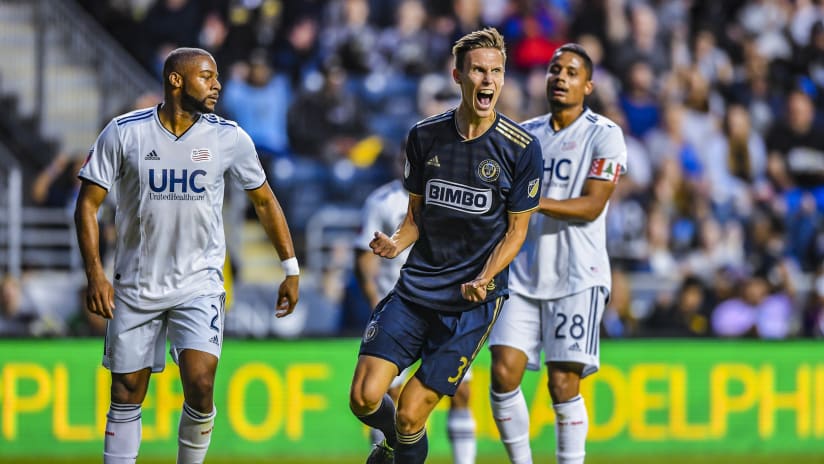Keep this in mind -- Jack Elliott was never handed anything. As Jim Curtin said when the young centerback's new contract was announced, some guys take their chance and some don't. Some sink, some swim.
Elliott, all six-foot-forever of him, was thrown into the MLS deep end -- his first minutes came as a halftime substitute against DC United -- and has been hurtling through the ups and downs of life as a professional athlete ever since.
As a rookie out of West Virginia, Elliott looked like a bit of a 'tweener: Did he have the speed to be a defender? Did he have the speed of mind to play in midfield? Ironically for the extremely tall Elliott, his shortcomings often seemed in the foreground while his strengths were reduced to the occasional long whistle as one of his signature cross-field passes missiled over opponents' heads. He was somehow quietly nominated for Rookie of the Year after, equally quietly, emerging from the fourth round to become a starter.
But understanding Jack Elliott's rise from the fourth round to a locked-in starter (even as one of the best young centerbacks in the United States pushes him) turns the English-born, Scotland-eligible Elliott from a surprising success story into one that has larger meaning, one that represents both his club and the manager that gave him a chance.
The Union drafted Elliott in 2017 and added him to a stable of defenders that included Josh Yaro, Richie Marquez, and Oguchi Onyewu. Yaro and Gooch were the presumed starters, but by the time Elliott got his chance Marquez had already tagged into the first eleven as an injury replacement. So when the big kid from California went down, the even bigger kid from across the pond was called on. He went on to make 29 starts that year and was widely seen as one of the brighter lights in a fairly dark season.
There was no guarantee Elliott would ever play in MLS even after he was drafted; fourth-round picks rarely get that far. But in Jim Curtin, the big centerback with a cultured touch and a keen mind found a coach that believed in brains over brawn, and one that thought controlling a game with the ball was every bit as key for a CB as defending without it. Curtin played center back with a sharp, physical edge while Elliott plays it like a zen octopus -- not so much bruising opposing strikers as engulfing and suffocating them. But the differences in playing style are outweighed by the similarities in mentality. Curtin originally found a young man with an eyebrow-raising skillset, and now, just over two years later, he has helped a fearless, front-foot defender emerge and utilize those skills.
Elliott's key role as an attacking instigator out of the back is one piece of a larger club-wide philosophy that prioritizes controlling a match by controlling space. Opposing teams can't press the Union when Elliott can so easily play over the top of a press, and if they drop deep the big CB has grown more confident striding forward to become an extra ball-mover at the top of the final third. Elliott has molded the position into his own, allowing Jim Curtin to play the more defensive-minded Ray Gaddis and the less technical but equally aggressive and ambitious Auston Trusty around him. In much the same way that Curtin didn't entirely expect to have a heavily right-sided attack in 2018 but turned it into a system that lifted his team to the postseason, he couldn't have planned for Elliott to take such impressive strides forward in his development over the offseason.
But he did, and Curtin, to his credit, rolled with it.
Now Elliott has multiple Team of the Week nods while playing the best soccer of his young career, and he's at the heart of a team flying its flag atop the Eastern Conference.
The Union academy has produced two top centerback talents in Auston Trusty and Mark McKenzie, but its strength can overshadow the Union culture that accepts all comers provided you work hard and strive, constantly, to improve.
Jack Elliott has done just that, and has been rewarded.
Now he wants silverware.













